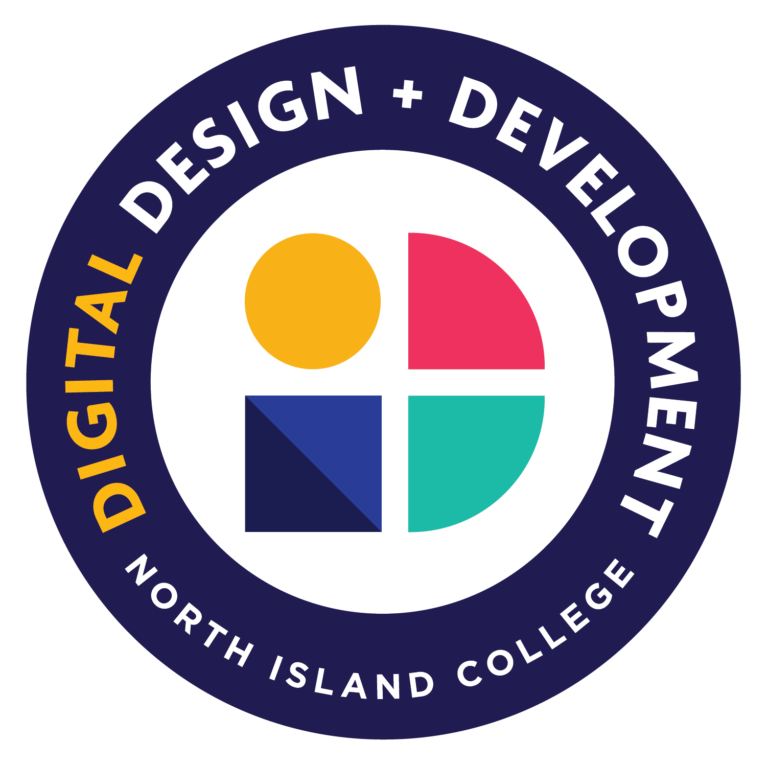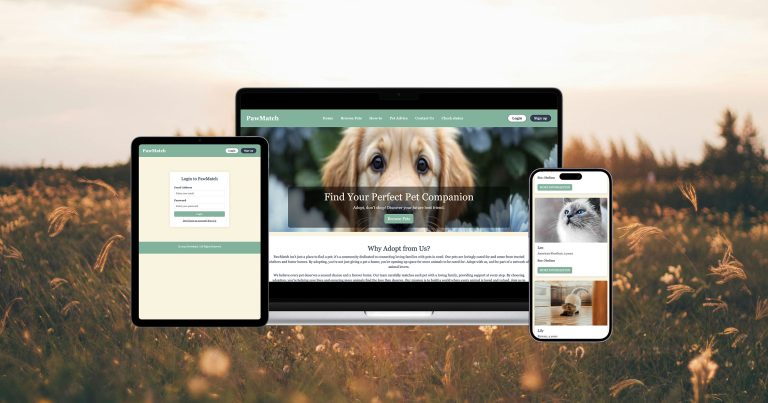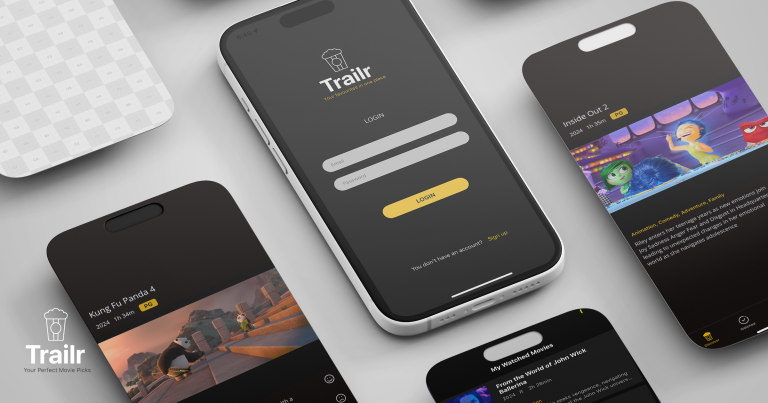SentimentPulse
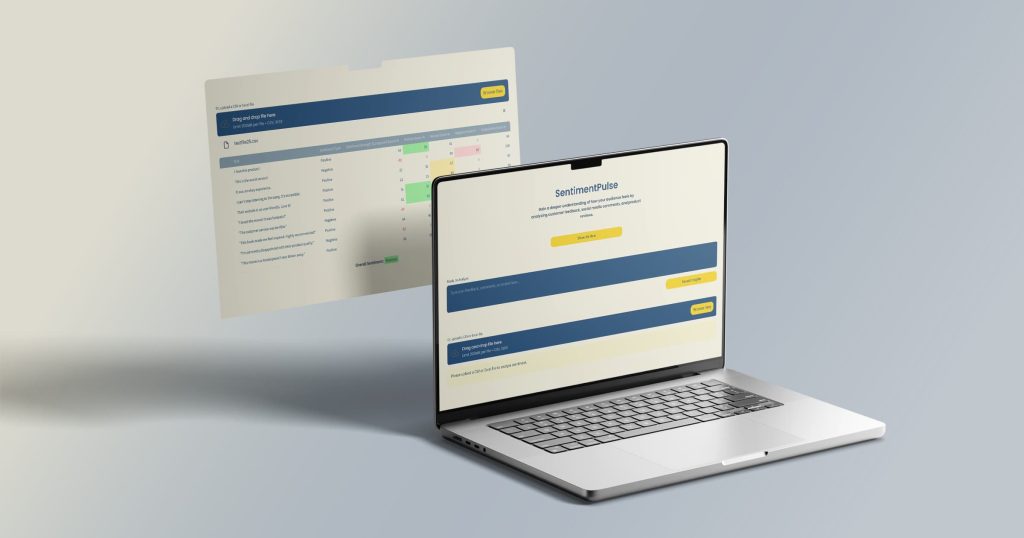
SentimentPulse is an interactive sentiment analysis application built on the Streamlit framework. It is designed to analyze and visualize the emotional tone of textual data, such as customer feedback, social media comments, and product reviews. To arrive at a sentiment result, the app executes the preprocessing pipeline which includes contraction expansion, spell checking, and tokenization.
The app uses a combination of VADER and TextBlob. VADER powers its core sentiment analysis functionality to calculate the text polarity score and using thresholds to categorize text as positive, neutral, or negative based on a compound score. For additional subjectivity analysis, TextBlob helps differentiate between objective facts and subjective opinions, offering crucial understanding into the emotional tone and intent behind the text.
Check it out on GitHub.
Research and Conceptualization
Starting with a blank screen offers infinite possibilities. And there lies the essence of this project: the freedom to choose an area that resonated with me the most.
My background as a candidate in a Master of Arts in Literature program led me to start looking into text analysis-related subjects, with a particular emphasis on sentiment analysis, customer reviews, and feedback. My goal was to learn Python and with it build an AI-driven application for text data analysis. I was keen to tackle this project for these reasons. As a developer, I sought to offer a paywall-free solution for SMEs and social media influencers to give them access to sentiment trends that could improve their marketing and decision-making.
Framework Selection
The next step was determining which Python framework to develop the app with. Through research and completing a mini-tutorial video using Streamlit, it became clear to me that this was the ideal framework. On top of the simplicity of Python syntax and available libraries, Streamlit helped simplify the development process with minimal code. It has built-in support for interactive widgets, which include text inputs, file uploads, and progress bars so it minimizes the time spent on frontend development.

MVP and Features
Identifying the most suitable framework helped me identify the app’s MVP and features.

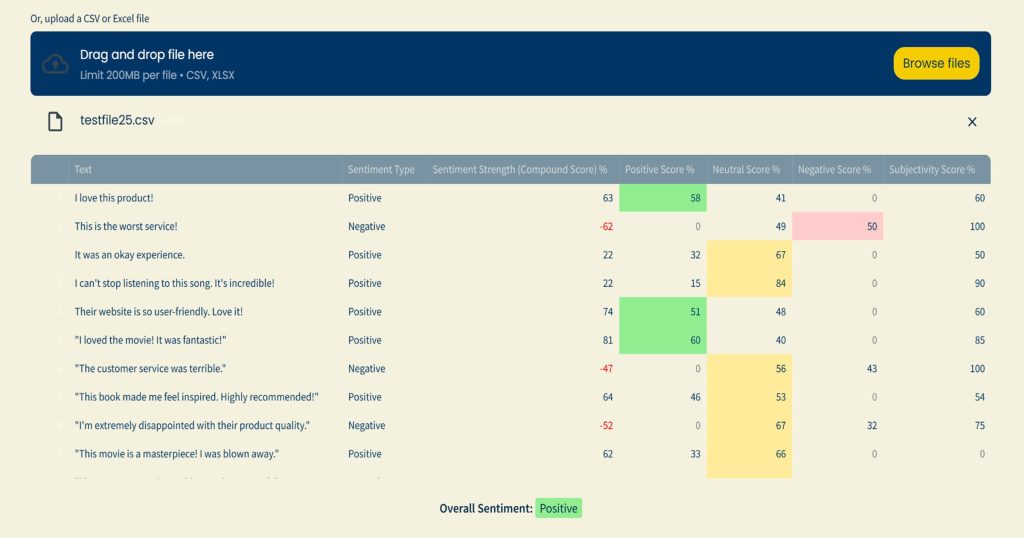

Sitemap and Wireframes
The next phase was to concentrate on how users will interact with the app. This involved creating a visual blueprint for the user flow and structure of the application.
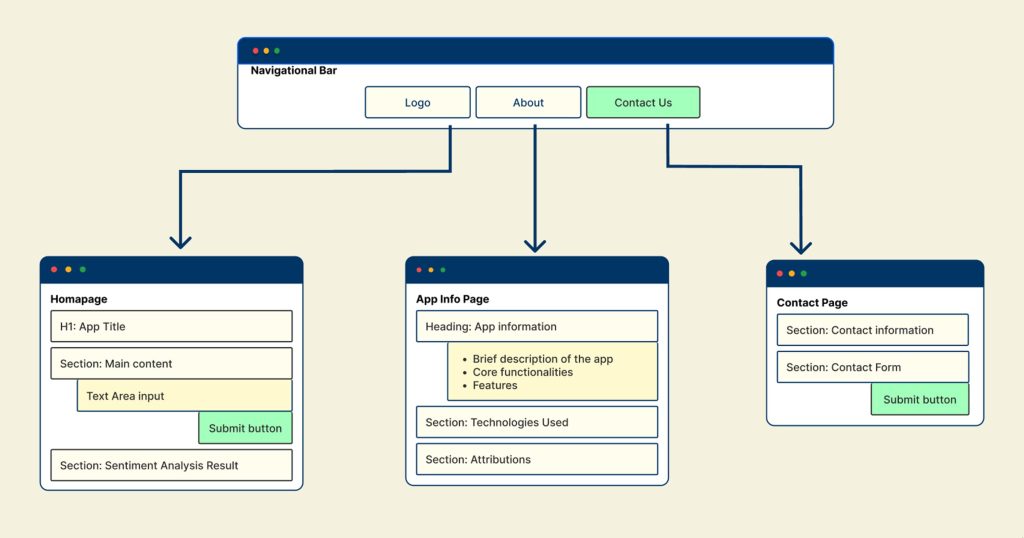
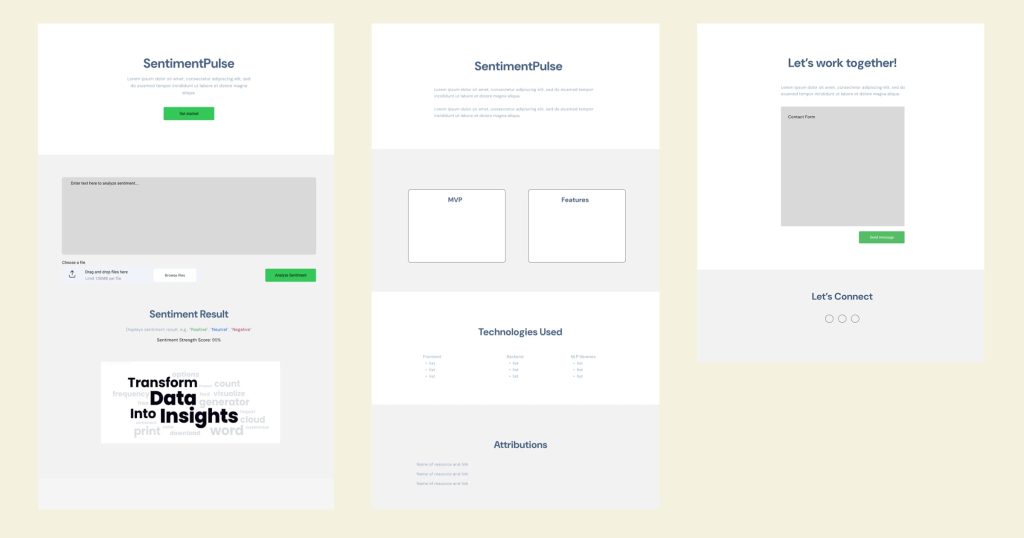
Environment Setup
I integrated VADER for sentiment analysis with TextBlob for subjectivity analysis. Additionally, I set up the necessary Python libraries and environments, such as nltk, pandas, matplotlib, plotly, and others, to handle text processing, visualization, and data management.
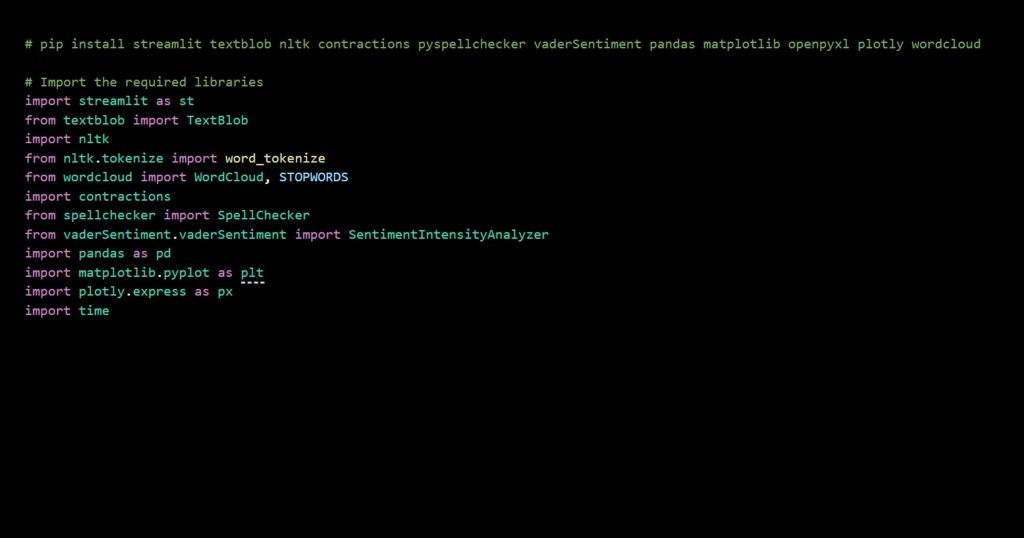
Building the app
Noise in raw text data, such as misspellings, colloquial language, and stopwords, might cause misunderstandings. In order to make sure that sentiment models (VADER and TextBlob) concentrated on the most pertinent words, I extended contractions, fixed spelling, and tokenized the text as part of the preparation or text preprocessing pipeline. This step enhanced the accuracy and reliability of the analysis.
My development process involved a lot of hands-on learning. It was a continuous research process. I completed a tutorial, read through Streamlit Docs, Python Docs and the Python GitHub repository, and sought solutions to technical challenges encountered during the project from Streamlit Discuss forum, GeeksforGeeks, and Stack Overflow.
